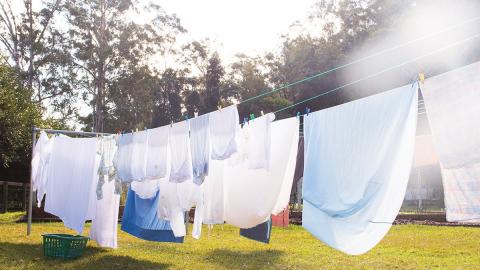There are ways you can save money on your electricity, gas and water bills. First, try to reduce your energy and water usage. Then make sure you're getting the best deal from your provider.
How to reduce your energy and water costs
Reducing heating and cooling costs
Around 40% of home energy use goes on heating and/or cooling.
- Fans are the most energy efficient cooling method – they cost around 3 to 5 cents an hour to run – much less than air conditioning.
- If you do use an air conditioner, set the temperature to 24-26 degrees in summer and 18-21 degrees in winter. Every degree outside this range can increase your energy use by 5-10%.
Reducing costs while working from home
With many of us working from home, energy costs may be higher. Energy Networks Australia have created a factsheet outlining the energy costs of working from home. Energy.gov.au have put together some helpful tips on how to manage your energy use.
Reducing hot water costs
Heating water accounts for about 25% of household energy use.
- If you replace your system, look for an energy efficient model. This could save you thousands of dollars. Read more on hot water systems.
- Front loader washing machines use less water and need less detergent than top loaders.
- Switch to cold water washes to save up to $124 a year and remember drying your clothes on the line is free!
- Use the most energy and water efficient model you can afford. Every extra star could save you 25% of your machine's energy use on a warm cycle.
Tips to save water
- Install a water-efficient showerhead. This may save a family of four around $315 a year.
- Always run your dishwasher with a full load, on economy mode or fast wash cycles and clean the filters regularly. Use a plug when you wash the dishes by hand.
- Choose an energy efficient washing machine. Check how products compare.
- Fix leaking taps – a dripping tap wasters around 2000 litres of water a month. You may be able to fix leaking taps at a discounted rate through Sydney Water.
More water saving tips:
For more energy and water saving tips visit the Your Energy Savings and the NSW Government Energy Saver website.
Replace inefficient appliances
Appliances account for up to 30% of your energy use. Leaving appliances on standby (when the light is on) wastes energy and can add up to 7% or $170 to your electricity bill. Turn off computers and game consoles at the wall when they’re not being used.
Replacing old inefficient models with new energy efficient models, can save you hundreds or thousands of dollars over their lifetime. Check the energy consumption and running cost of appliances using the Energy Rating calculator or subscribe to Choice for independent appliance reviews.
Need financial help? The No Interest Loan Scheme (NILS) offers loans for essential goods and services such as fridges and washing machines.
Find more tips to help reduce consumption.
Switch to energy efficient lightbulbs
Lighting uses between 8 and 15% of the average household electricity budget. Switch to low energy LED lighting and you’ll save money. To help, the NSW government currently has a discount energy efficient lighting offer.
Switch to a better energy offer
The right energy offer can save you money, but it needs to suit your circumstances. Make sure you read our tips for switching retailers before you agree to transfer your account. Commercial 'switch' services may not represent all retailers or all offers available to you. For free and independent comparison of energy offers, visit Energy Made Easy.
Audit your home
There are a number of interactive websites which can estimate your energy and water usage and compare your usage to similar households. Check your retailer's website or visit the Naber online audit energy tool. Before starting an audit, have your previous bills handy (particularly a summer and winter bill).
Rebates
The NSW Government offers energy rebates for households and businesses. Your local council may also offer rebates and assistance, so check with them too.




